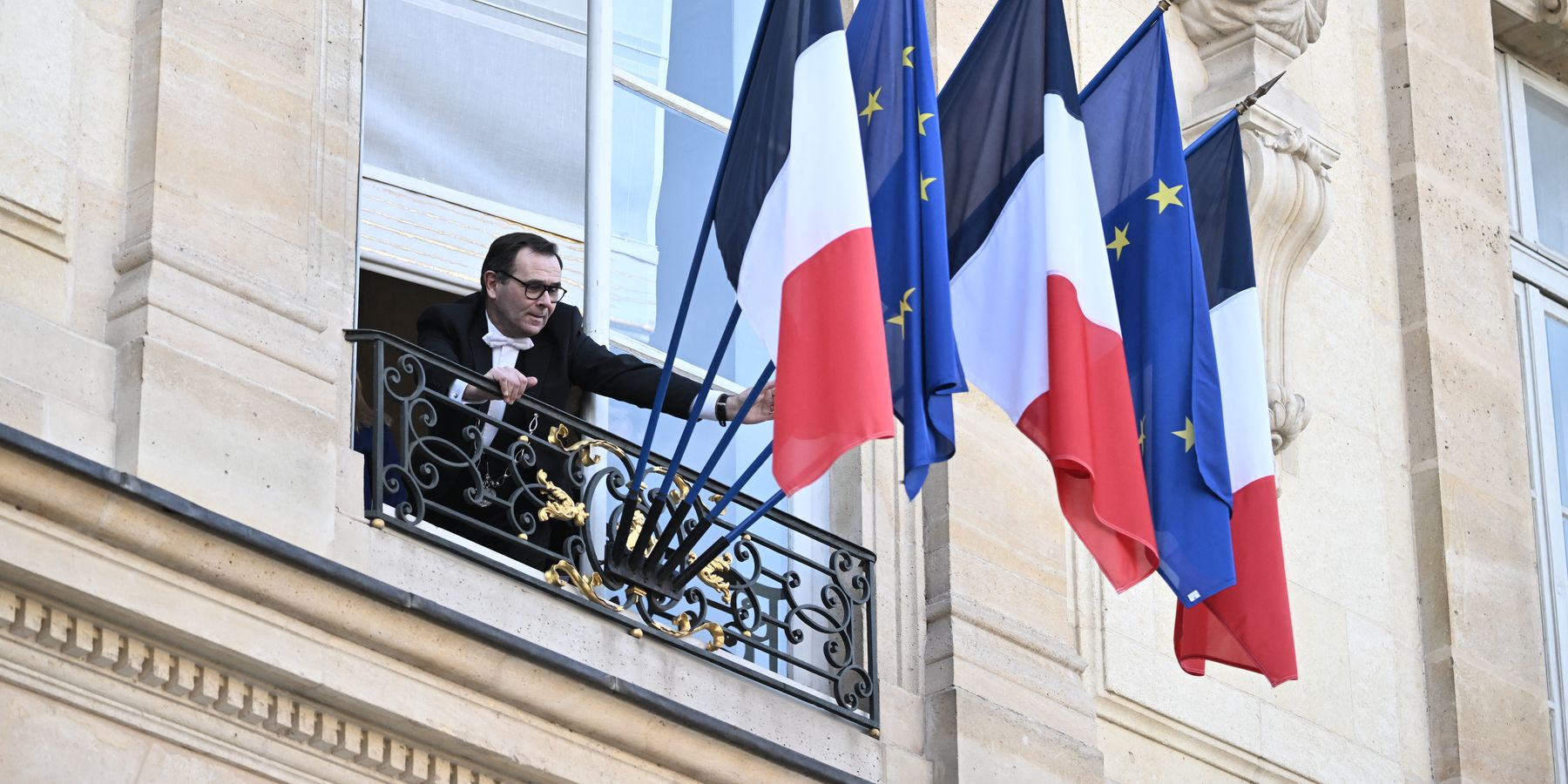European summits are not usually the stuff of poetry, but the latest one in Paris was worthy of Horace: Patrturiunt montes; nascetur ridiculus mus — “Mountains will be in labour; and give birth to a ridiculous mouse.”
President Macron of France called the summit in response to what he called the “electroshock” of the Trump administration’s election and plans to negotiate Ukraine peace without the Europeans. The result so far however appears to have been even less than a mouse — in fact, precisely nothing.
Macron presumably hoped that the leaders of the other major European states would rally behind his own proposal of French and European peacekeeping troops for Ukraine (an idea already categorically rejected by Moscow). Keir Starmer of the UK did indeed make such an offer, only shortly afterwards to say that no European guarantee of Ukrainian security would be credible without what he called a US “backstop.”
Since Defense Secretary Pete Hegseth had already publicly ruled out any such U.S. guarantee, Starmer thereby implicitly admitted that his offer of British troops was empty. British parliamentarians have also demanded a vote on the dispatch of British troops. In the meantime, on leaving the Paris meeting, Chancellor Olaf Scholtz of Germany said that a discussion of European troops for Ukraine is “completely premature” and “highly inappropriate” while the war is ongoing. Prime Minister Donald Tusk of Poland (one of Ukraine’s strongest supporters) ruled out Polish troops altogether:
"We do not plan to send Polish soldiers to the territory of Ukraine. We will ... give logistical and political support to the countries that will possibly want to provide such guarantees in the future, such physical guarantees."
Macron has also emphasized something that makes much more sense: namely that the Europeans need to build up not only their own armed forces, but also the military industries that supply them. In an interview with the Financial Times, he said that:
“We must also develop a fully integrated European defense, industrial and technological base. This goes far beyond a simple debate about spending figures. If all we do is become bigger clients of the US, then in 20 years, we still won’t have solved the question of European sovereignty.”
This is indeed extremely necessary — though it is clear that Trump expects that higher European military spending will be spent on U.S. weaponry, and is prepared to bring pressure to bear to make sure this is the case. But Macron’s interview also brought out the acute difficulty of such European integration. He urged European countries to buy the SAMP-T air defense system, which he said is better than the U.S. Patriot missiles system that several countries are presently using.
For all I know, he may be right about that; but it is surely no coincidence that the SAMP-T is made in France and Italy. The real proof of Macron’s commitment to the integration of European military industries would be if — for example — he agrees to give up production of France’s Leclerc main battle tank in favor of buying Germany’s Leopard tanks for the French army.
The UK exemplifies this problem. With one of the very few professional fighting armies in Europe, it is critical to any independent European defense. But while it has excellent soldiers, its weapons systems have been plagued with breakdowns and deficiencies, largely because the wider British industrial base is now too limited to support an efficient military sector. On the other hand, precisely because British industries have shrunk so far, military industry is critical to maintaining what is left of British technological expertise. Give this up to the Germans? Really?
The kind of radical increases in military spending being demanded by the Trump administration and advocated by Macron and Starmer will also require some combination of increased taxes and savage cuts to social welfare, health and infrastructure budgets, at a time when these are already under intense pressure from economic stagnation, and as a result the discontent of ordinary people is rising steeply.
As Stephen Bush of the Financial Times has written concerning Starmer’s military pledges:
“Politically, whatever choice Labour ends up making will be hard: to increase defence spending without breaking its pledges on tax means overseeing incredibly sharp and painful cuts everywhere else— the road to certain electoral defeat in my view. But an increase in income tax, national insurance or VAT comes with big risks attached too.”
There is however a third way, which if not chosen by the British Labour government will certainly be taken by other future European governments: not to increase military spending at all.
For this is the other problem with expensive and risky commitments by present European governments: Given the tectonic political shifts under way in Europe, it is highly unlikely that future European governments will in fact stick by such commitments. President Macron is already in effect a lame duck. The center ground of German politics is shrinking fast. Starmer’s posturing over Ukraine looks very like a conscious or unconscious attempt to distract attention from near-paralysis in domestic politics. Such diversionary messaging can work for a while, but cuts little ice in an endless queue to see a doctor.
The chaotic state of present European thinking on Ukraine and the Ukraine peace process reflects this underlying lack of public will, as well as the bewilderment of European establishments that for many years have left responsibility for their strategy in the hands of the United States, and now find themselves expected to think for themselves. It also however reflects the fact that the premises on which European policies have been based are in part radically contradictory, and these underlying contradictions are exposed whenever it becomes a question of Europeans acting for themselves.
Thus the advocates of a European force for Ukraine have fallen into a state of mental confusion for which “cognitive dissonance” is a wholly inadequate description. They have created for themselves a belief in Putin’s megalomaniac ambition, leading to the idea that in future he will “test” NATO by attacking the Baltic States, though Putin has never shown the slightest desire to do so, and this would run hideous risks for minimal gains.
Yet somehow this has led them to argue for European commitments to Ukraine that Russia would be absolutely bound to test, and the U.S. will not support. This would radically weaken the credibility of NATO security guarantees. Some of the very same analysts who have written — in part accurately — about the historical, cultural and ethnic roots of Putin’s “obsession” with Ukraine, also write as if Putin, and Russians, have the same obsession with Poland and the Baltic States — a misunderstanding of Russian attitudes that is either totally illiterate or deliberately mendacious.
The idea that Europeans would be defending the Baltic States by intervening in Ukraine is also a very strange one, that reflects the painful experiences of the Baltic States’ past rather than an objective analysis of their situation today. For the greatest threat to the Balts from Russia comes not from Russian ambitions in the Baltic, but precisely from the danger that the war in Ukraine will widen to become a conflict between NATO and Russia.
Moreover, European military commitments to Ukraine would be a direct weakening of the defenses of NATO. Given time, the British could just about cobble together one division to send to Ukraine, but only if they not only stripped out the defenses of Britain itself, but also gave up their existing commitments to Poland and the Baltic States, which the UK is bound by treaty to defend.
Let us hope that this is indeed mere theatrical posturing on the part of British and European hawks; for to judge by some of their present statements, a theatre playing make believe is where this belongs.
- Munich Dispatch: Zelensky calls for an 'Army of Europe' ›
- European 'peacekeepers' in Ukraine? A horrible idea. ›
- Ukraine War at 3: The victory we demanded and the attrition we got | Responsible Statecraft ›
















